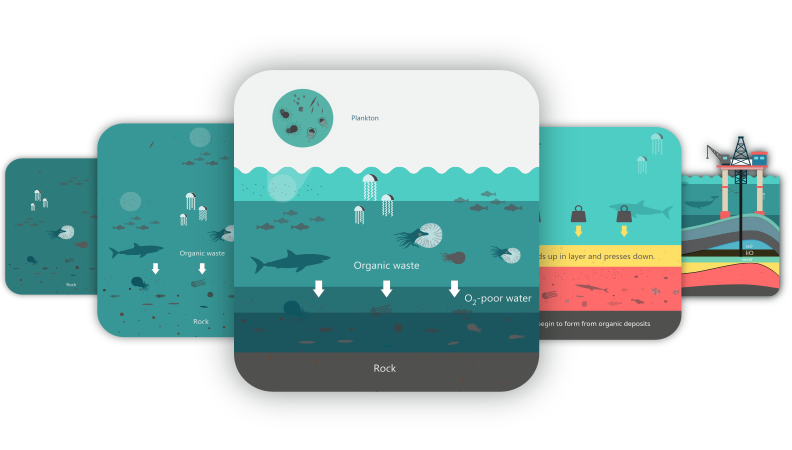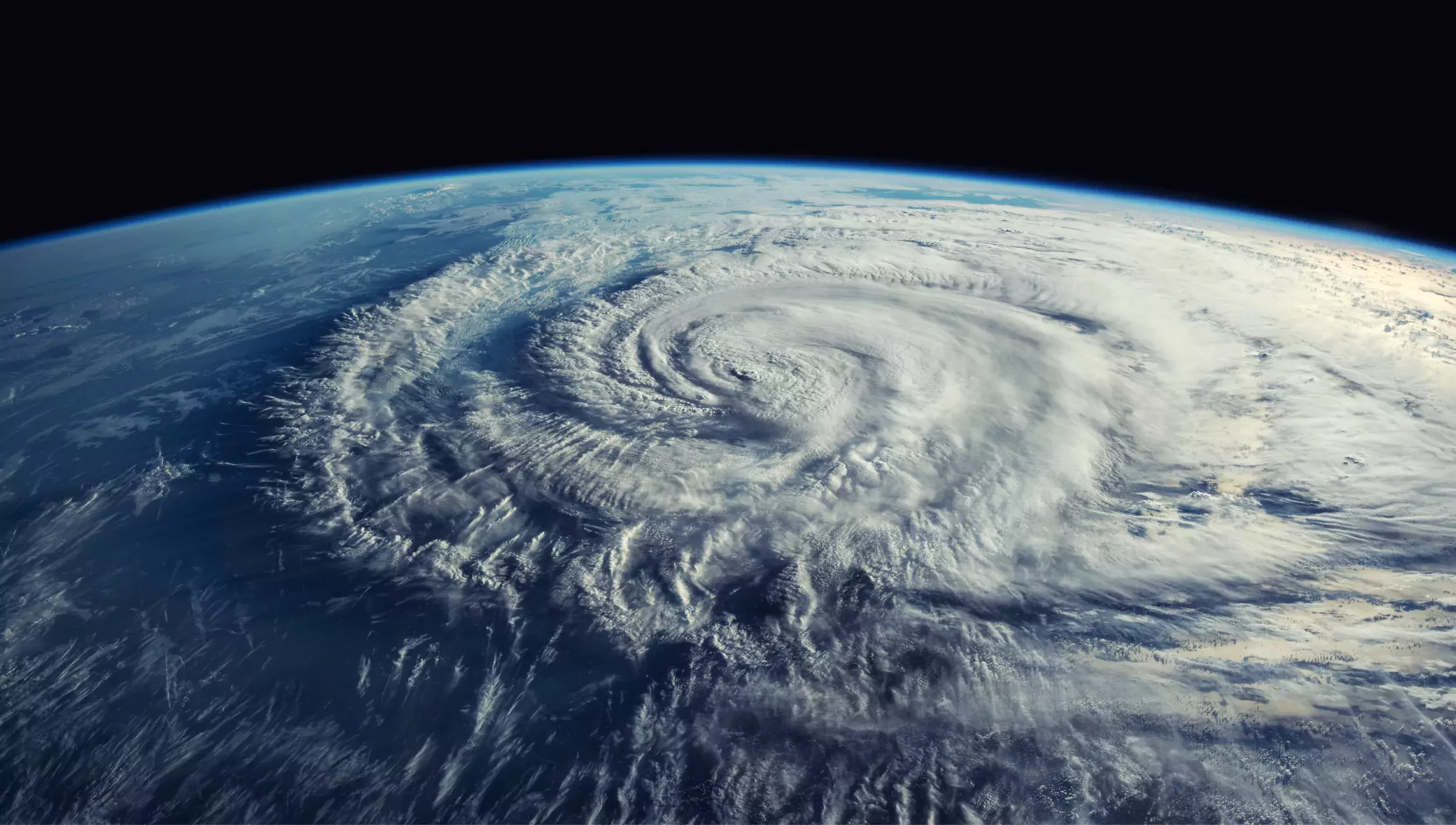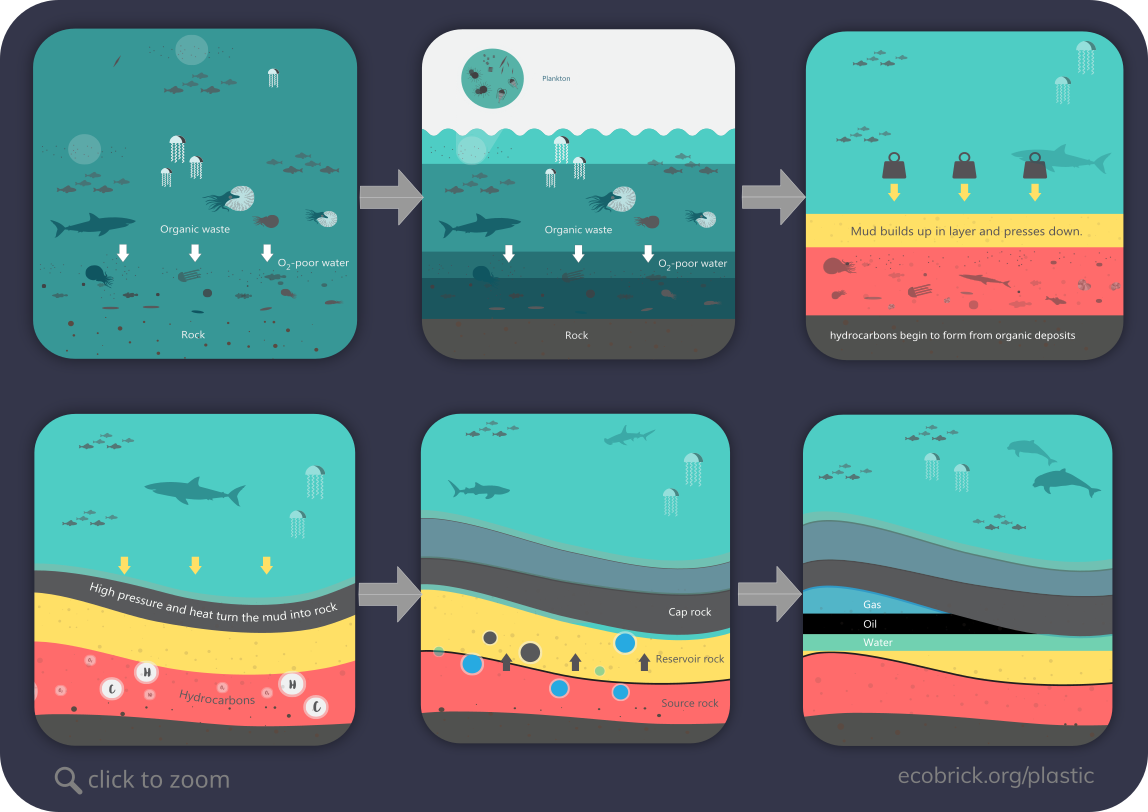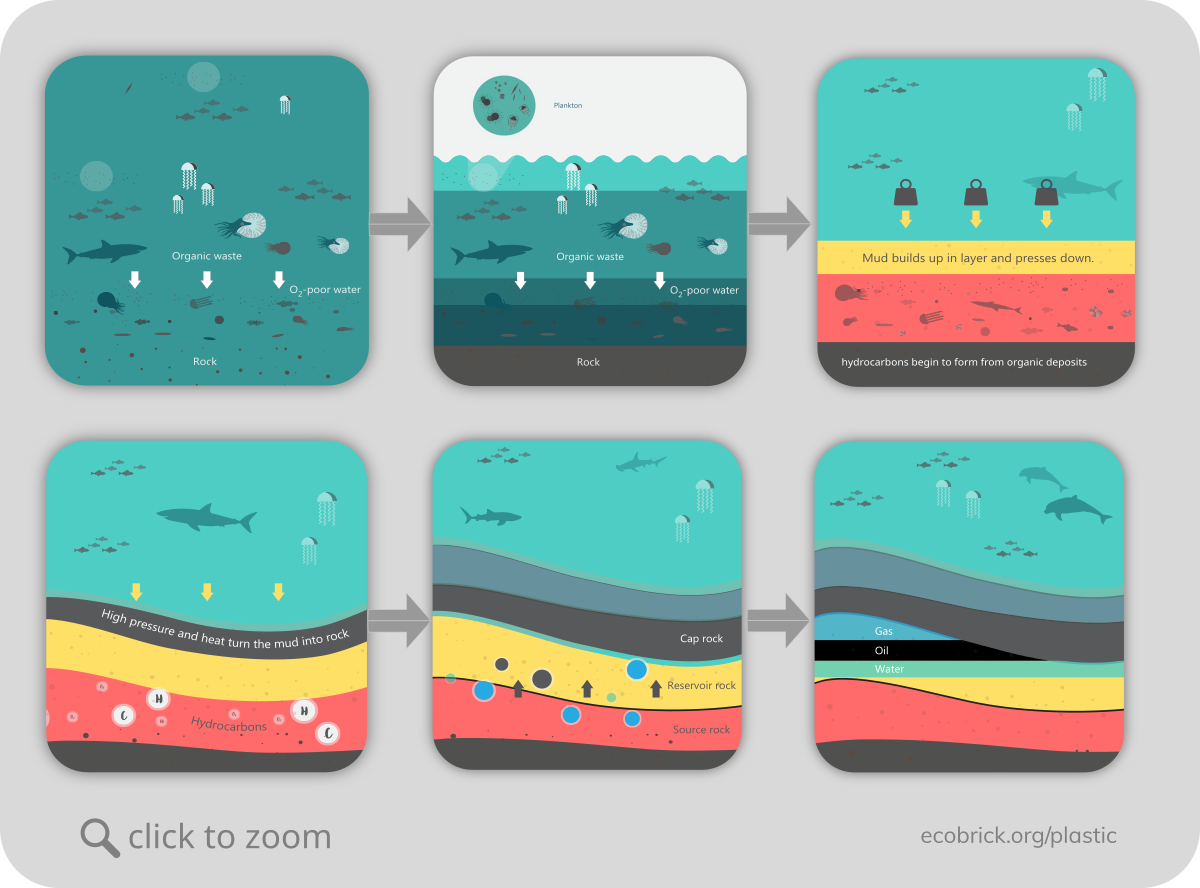What is plastic exactly? Where does it come from? And, of concern to us all, where should our plastic go?
To manage our plastic wisely and to make safe decisions about its future, knowing its full, science-based history is essential— what we call the long story of plastic. Only by knowing plastic's ancient origins can we ensure its future is an ecological contribution– rather than just more pollution.
Ready for a deep dive? Settle in and return with us to our planet's primordial past...
Get Earthen
Receive our bi-monthly Earthen newsletter and follow the latest developments in the plastic transition movement.
Free + access to Earthen resources
OVER FOUR BILLION YEARS AGO, cosmic dust and debris swirled together to form our planet. Like the other planets in our solar system, Earth was at first a barren and desolate place. For our planet's first two billion years, its atmosphere was full of carbon dioxide, making its climate hot, harsh and unstable.
However, as the Sun shone down, things began to change. Steadily, the unique character of our planet began to unfold. Volcanoes spewed, rivers ran, and ocean currents and tectonic plates collided. As the surface of the earth dispersed the sun's shine, Earth's atoms began to spiral into more and more complex configurations. Slow and steady, tiny molecular systems figured out how to turn the light of the Sun into life.
As cells and photosynthesis emerged; plants followed. By sucking in carbon dioxide nutrients could be made and bodies built.
Steadily, plants and trees spread across the planet's surface.
Made from the carbon that they collected, soon vast forests covered the continents and massive blooms of algae filled low lying seas.
As the plants and animals within these ecosystems lived and died, each fallen generation was covered up by the next. Whether on a forest floor or the floor of the ocean, layers of life were buried one upon the other. Over hundreds of millions of years, the countless tons of the carbon they contained were concentrated, compacted and secured under the earth.
With all this carbon sequestered out of the air, Earth’s atmosphere calmed and cooled down. Steadily, life flourished! Ecosystems and biomes all became more vibrant, diverse and abundant.
Nurtured by the planet's now lush and bountiful ecosystems, one particular two legged ape emerged from the forests about 30 million years ago— and we sapiens shuffled onto the scene!
Then, on a cold, dark Ice Age night, one of our early ancestors figured out fire.
Despite the pesky smoke, our caves were warmed as the carbon of twigs and sticks flickered into flames.
Over the millennia, we got better and better at making our fires.
It wasn't long until we dicovered black rocks that were even more dense in carbon than the heaviest wood. And they burned even better! Little did we know, these stones were made from the very plants that had long ago removed the carbon from Earth's air, to make our living possible.
Over the next centuries, certain groups of humans (but not all) got better and better at extracting and burning the black rocks. Other types of ancient compacted carbon were discovered too. Soon we were extracting coal, petroleum and natural gas in great quantities.
As modern nations flourished, their economies began to rely more and more on the easy energy gained from burning these "fossil fuels".
However, despite the nifty name, these fossil deposits were never fuels at first! In the process of refining them into fuel, there was a left over residue (5-15% depending on the source) that just couldn’t be used. This left-over sludge began to pile up.
We soon realized that the residues of refinement could be used too! With a little chemistry, polymers could be produced—and with a little more; an endless array of marvellous materials.
Plastics had arrived!
Soon humans were solving all sorts of problems by making all sorts of amazing plastic things. No longer did elephants need to be killed for their ivory to make billiard balls. No longer did you need expensive silver plates to take a photograph. No longer did food need to go bad in a few days.
As more products were consumed, more and more factories needed to be made. As more factories needed to be powered, more and more fossil fuels were extracted and refined. Petroleum and capital flowed while economies grew.
As it all spun faster and faster, there was always that little bit that couldn’t be processed. This led to industry producing more and more plastic at lesser and lesser cost. And just as burning fuels led to more and more smoke, so too did refining fuels lead to more and more plastic.
As we consumed more and more, we tried our best to reuse and recycle our plastic when we were done with it. Of course, we were refining so much fossil carbon into fuel that there was now an over-abundance of leftovers perfect to make polymers! In the end, it was much easier (and cheaper!) to just produce more new plastic from scratch.
However, soon there was so much plastic that it began to spill out of our homes, enterprises and industries. With growing alarm and anxiety we watched as our plastic clogged rivers, littered beaches and piled into great smoking mountains. Microscopic particles of plastic were soon everywhere. Inside the bodies of fish and animals. And our bodies too.
Shocked and shamed, our industries and our companies promised to do better! And they tried. They did their best to convince everyone that there was a solution just around the corner. Companies, scientists, businesspeople and politicians strove valiantly to make our processes, products and packaging less harmful, less polluting and lvaliantess damaging.
Yet after turning countless corners, despite being less harmful and less polluting— polluting and harmful their processes remained.
Year by year, the pollution of the rivers and the oceans continued to increase.
And with it, our despair.
It was clear that reducing harm wasn't enough.
How could we ensure our products, processes, packaging, and enterprises did not cause pollution?
How could we manage our plastic in a truly green way?
How could we make sure that our ways were not grey and harmful in the first place, but in fact helped make ecosystems vibrant and verdant, diverse and abundant?
It turns out, that the answers could be found in the story itself.
Seeing Plastic Anew
In light of Earth’s ancient history, we can see our modern plastic differently…
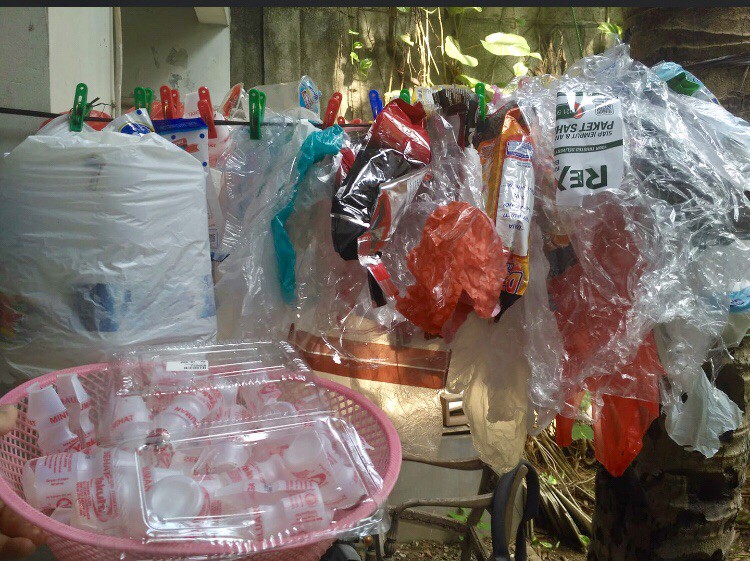
Plastic that has been segregated, cleaned and dried for ecobricking.
Seeing our plastic through the lens of Earth's story, we can observe that…
- Our plastic is made from the very carbon and the very process that Earth used to green our planet's surface!
- There is a direct connection between burning fossil fuels and the production and dispersal of plastic.
- Plastic is the one form of refined fossil fuels that remains densely compacted.
- There's no industrial or economic solution for plastic, because industry and our economies are at the root of plastic's subsidized low cost and vast availability.
Learning from Earth
We can learn much from the way Earth transformed from barren to biosphere.
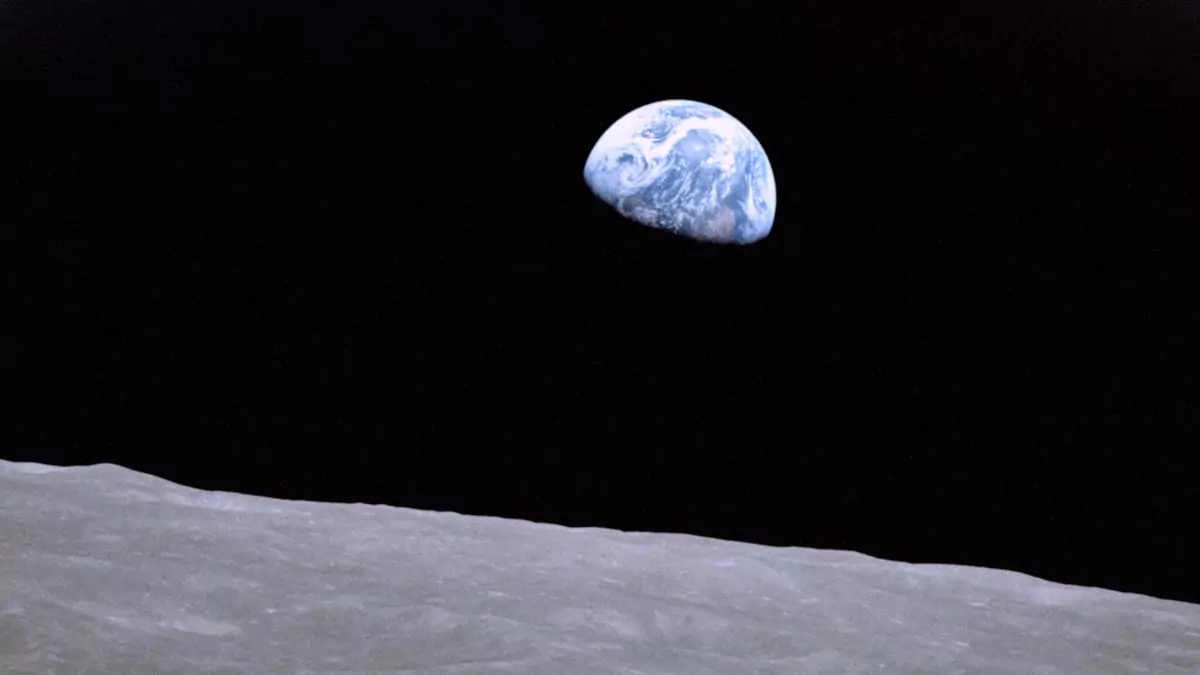
Earth Rise - the first photo of Earth from the moon. Seeing ourselves and our plastic from a planetary perspective is key.
By looking closely at Earth’s primordial past we can observe…
- Earth used carbon in the short-term as an indefinite building block.
- Earth steadily concentrated, secured and sequestered carbon into long-term storage out of the biosphere.
- Earth’s procesess tended to subtract more carbon into storage than they added back to the atmosphere.
- Earth’s processes distributed nutrients out across its surface and systems ever more broadly and beneficially.
- Earth’s processes tended towards more and more diverse systems, organisms and ecosystems.
- Earth’s organisms and ecosystems tended towards more and more awareness of themselves and their interconnection.
These Earthen dynamics provide a powerful example of what green means. Following Earth's example, we can be sure that the results will also be ecologically enriching.
In fact, we can apply Earth's example directly to the management of our modern plastic…
- The less we participate in the petro-capital economy, the less fossil fuels will be extracted and refined, and the less plastic will be produced.
- It is important to keep the carbon that is already under the ground in the ground. This is the easiest way to prevent it from getting loose into the atmosphere
- For plastic that is already produced, can secure it out of inudustrial systems that would otherwise disperse it.
- The plastic that passes through our hands we can compact, secure and sequester ourselves
- We can be sure that only enterprises that operate for-Earth (rather than for profit) are the ones that oversee plastic management.
These Earthen principles are articulated in the ecological theory of Earthen ethics.
🍃 Earthen Ethics
The Tracatus Ayyew theory of Green & Grey
Learning from Indigenous Peoples
We can learn from those great civilizations that presided over the enrichment of the ecosystems of which they were part.
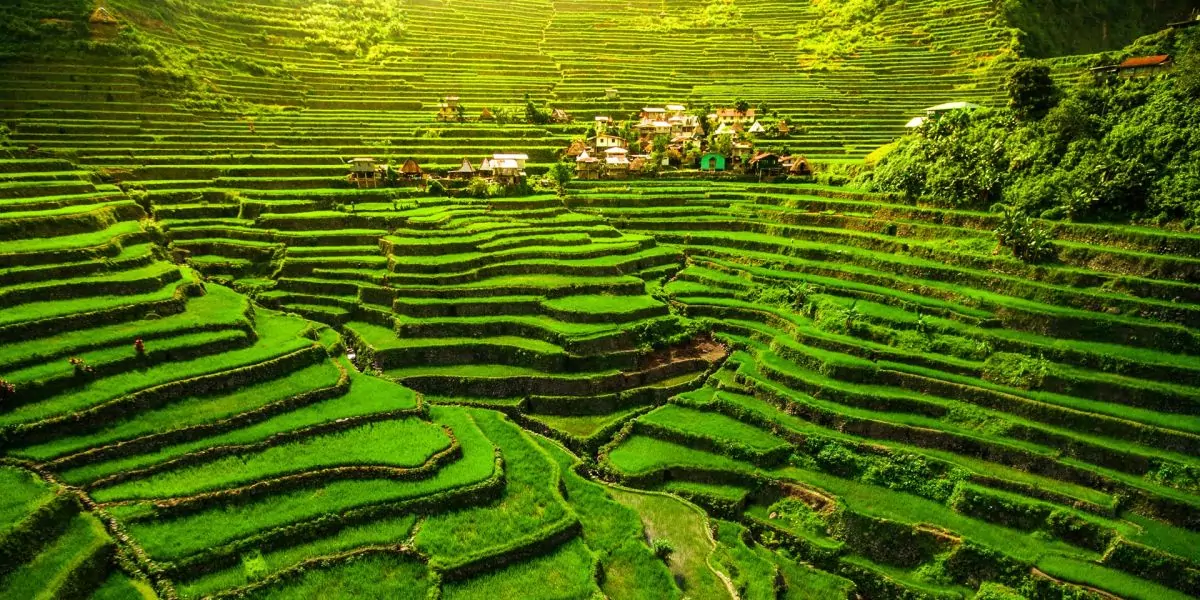
The Banue Rice Terraces in the land of the Igorot people - Northen Luzon, West Philippines Sea.
Many great civilizations and nations throughout human history have thrived in harmony with their surrounding ecologies. The way they looked at the world, what they valued and how they used money (capital) is something that we can learn much from.
The Igorot people have lived in ecological abundance in what is now the Northern Philippines for the last centuries. In their world view they have a virtue for making a place ever greener. Someone who successfully transforming barren land into a field, or a field into a garden, or a garden into a forest is called "Ayyew".
In Igorot society, the virtue of Ayyew ranks with Courageous, Honor, and Loyalty in their way of seeing the world.
The underlying idea of Ayyew is syncing with cycles into ever greater harmony. It is an idea that can help us make sense of the way the Earth has been working for the last few billion years. In fact, this is what inspired the Igorots in the first place!
🍃 The Ayyew Ethos
Learn about the Igorot ecological paradigm
Plastic Sequestration
Learning from the example of Earth and indigenous peoples, the way forward to manage our plastic as an ecological contribution is clear.
Earth’s example of short-term carbon cycling and long-term carbon storage can be applied to our plastic. The GEA has developed the concept and criteria of plastic sequestration as means of regenerative ecological service.
Learn more…
🍃 Plastic Sequestration
The criteria of plastic sequestration
Our account of Plastic's Long Story is based on Plastic's Interstellar Story from the Tractatus Ayyew: A theory of Earthen Ethics, Chapter 4, by Banayan Angway and Russell Maier. See this original account to go much deeper into plastic's story! The orginal version's scientific and social references are extensively footnoted.
